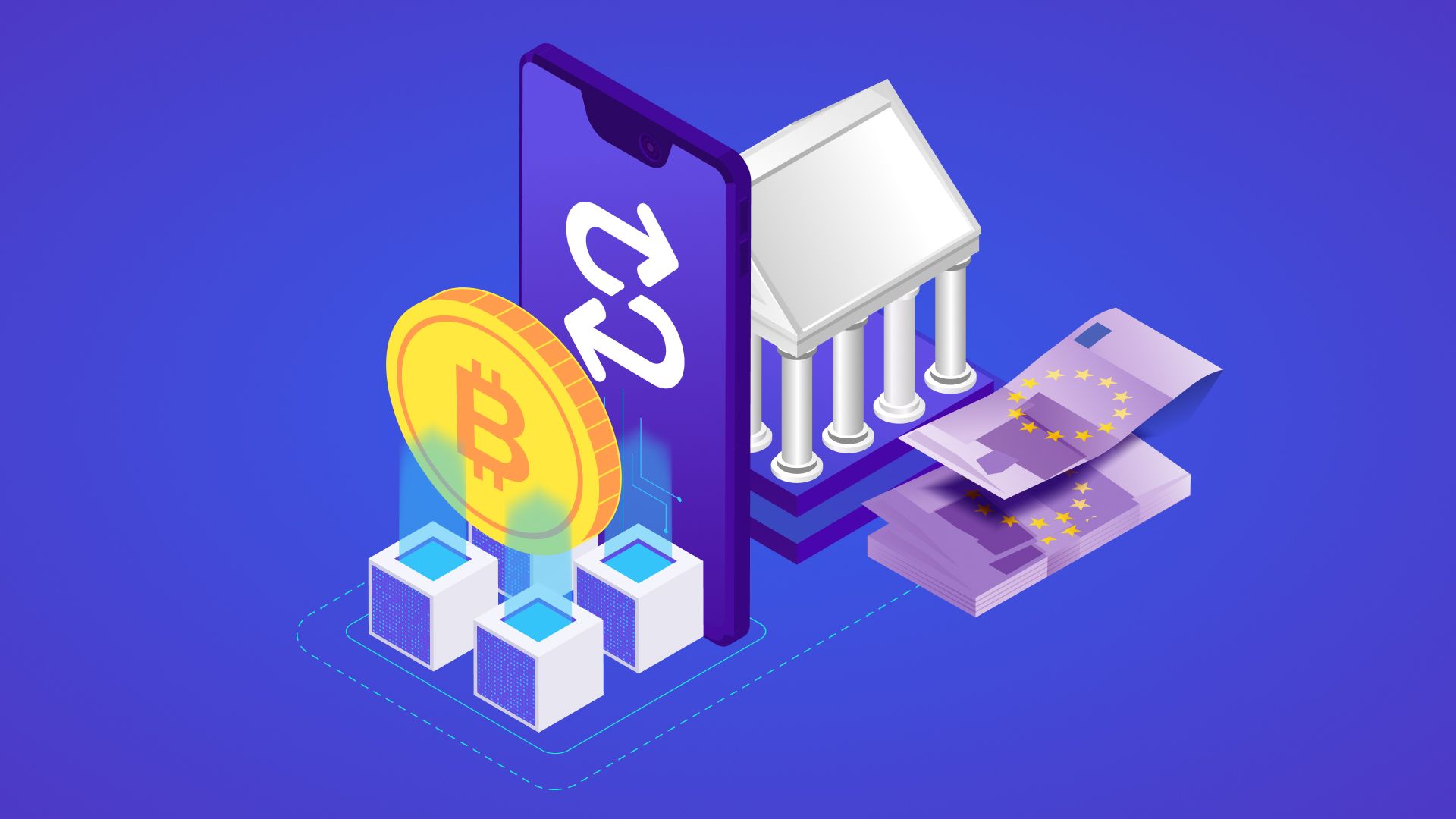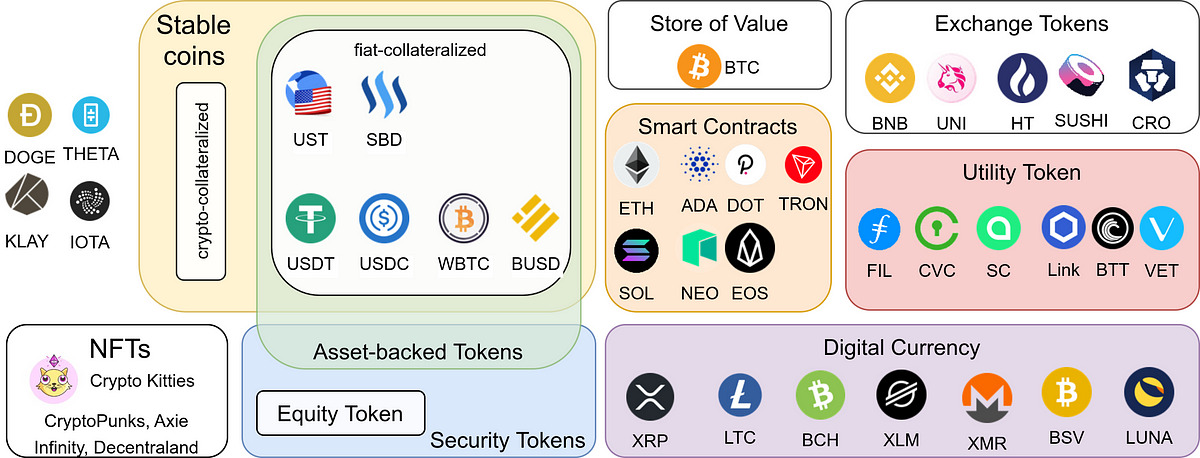Introduction
Welcome to the world of cryptocurrency! In today’s digital age, the concept of money has taken on a new form, transforming the way we transact and store value. Cryptocurrency, a decentralized digital currency, has emerged as a revolutionary concept that has captured the attention of individuals and businesses worldwide.
Unlike traditional forms of currency issued and regulated by central authorities such as governments or financial institutions, cryptocurrency operates on a decentralized network called blockchain. This innovative technology allows for secure and transparent transactions, cutting out intermediaries and enabling peer-to-peer transfers.
Cryptocurrency has gained significant traction in recent years, with Bitcoin being the most well-known and widely adopted. However, it’s important to note that Bitcoin is just one of thousands of cryptocurrencies available today, each with its own unique features and purposes.
As the cryptocurrency market continues to evolve and expand, it’s crucial to have a solid understanding of how this digital currency works, its benefits and risks, and how you can get started on your own cryptocurrency journey. In this article, we will explore the fundamentals of cryptocurrency, the different types available, and the potential rewards and challenges associated with this exciting and dynamic field.
So, whether you’re a curious individual looking to dip your toes into the world of cryptocurrency or a seasoned investor seeking to expand your portfolio, join us as we delve into the captivating realm of cryptocurrency and unravel its mysteries.
What is cryptocurrency?
Cryptocurrency is a digital or virtual form of currency that uses cryptography for secure transactions and to control the creation of new units. Unlike traditional currencies like the US dollar or euro, cryptocurrency is decentralized and operates on a technology called blockchain.
At its core, cryptocurrency represents a digital asset that can be used as a medium of exchange for goods and services. However, what sets cryptocurrency apart is its underlying technology and the absence of a central authority governing its transactions.
The most well-known form of cryptocurrency is Bitcoin, which was created in 2009 by an anonymous person or group using the pseudonym Satoshi Nakamoto. Bitcoin paved the way for the development of other cryptocurrencies, often called altcoins, that have since emerged with their own unique features and use cases.
One of the key features of cryptocurrency is its use of cryptography, a method of encrypting information to secure it from unauthorized access. Cryptography ensures the security and integrity of transactions, making it virtually impossible to counterfeit or double-spend cryptocurrency units.
Another important aspect of cryptocurrency is its decentralized nature. Unlike traditional currencies that are issued and regulated by central banks, cryptocurrencies operate on a peer-to-peer network. This means that transactions are directly between individuals, without the need for intermediaries like banks or financial institutions.
Transactions made with cryptocurrency are recorded and verified on a public ledger called the blockchain. The blockchain is a distributed and transparent database that maintains a chronological record of all transactions. Each transaction is grouped into a block and added to the chain, creating an immutable and tamper-proof system.
Furthermore, cryptocurrency units are created through a process called mining. Miners use powerful computers to solve complex mathematical problems, and in return, they are rewarded with new cryptocurrency units. This process not only helps secure the network but also regulates the creation of new units, ensuring a limited and controlled supply.
Overall, cryptocurrency represents a paradigm shift in the concept of money. With its decentralized nature, strong security measures, and potential for innovation, cryptocurrency has the potential to disrupt traditional financial systems. As its popularity continues to grow, it’s important to understand the fundamental principles and workings of cryptocurrency.
How does cryptocurrency work?
To understand how cryptocurrency works, it’s essential to grasp the underlying technology that powers it: blockchain. Blockchain is a decentralized, transparent, and immutable digital ledger that records all transactions made with cryptocurrency.
When a cryptocurrency transaction occurs, it is broadcasted to a network of computers, also known as nodes. These nodes validate the transaction using complex algorithms and consensus mechanisms, ensuring its accuracy and legitimacy. Once validated, the transaction is added to a block.
Each block contains a group of transactions, and once a block is full, it is added to the existing blockchain, creating a chain of blocks. This sequential arrangement ensures that all transactions are interconnected and easily traceable.
The security of cryptocurrency transactions is achieved through cryptographic techniques. Cryptography involves encrypting sensitive data, making it virtually impossible for unauthorized individuals to access or tamper with the information. This ensures the integrity and privacy of the transactions.
One of the key advantages of cryptocurrency is the elimination of intermediaries, such as banks or financial institutions, in the transaction process. With traditional financial systems, a third party is usually involved to facilitate and verify transactions. In contrast, cryptocurrency transactions occur directly between the sender and receiver, reducing costs and increasing efficiency.
Cryptocurrency also offers a degree of anonymity. Although transactions are recorded on the blockchain and can be traced back to an address, the identities of individuals involved are generally pseudonymous. This pseudonymity provides a level of privacy for users, although it is important to note that complete anonymity is not guaranteed.
In addition to facilitating peer-to-peer transactions, cryptocurrency can also be used for other purposes. For example, some cryptocurrencies enable smart contracts, which are self-executing agreements coded onto the blockchain. These contracts automatically execute when predetermined conditions are met, eliminating the need for intermediaries.
Cryptocurrency can also be an investment asset. The value of cryptocurrencies can fluctuate, allowing investors to potentially profit from buying and selling at the right time. However, it’s important to note that the cryptocurrency market is highly volatile and speculative, and investors should exercise caution and conduct thorough research.
Overall, cryptocurrency works by utilizing blockchain technology to enable decentralized and secure transactions. By eliminating intermediaries, ensuring privacy, and offering additional functionalities like smart contracts, cryptocurrency has the potential to reshape various industries and revolutionize the way we exchange value.
Types of cryptocurrency
The world of cryptocurrency is diverse and constantly evolving, with new cryptocurrencies being created regularly. Although Bitcoin remains the most well-known cryptocurrency, there are numerous other types, each with its unique features and purposes.
1. Bitcoin (BTC): Bitcoin is the pioneering cryptocurrency that started it all. It was created in 2009 by an anonymous individual or group under the pseudonym Satoshi Nakamoto. Bitcoin operates on a decentralized network and is often referred to as digital gold due to its potential as a store of value.
2. Ethereum (ETH): Ethereum is a cryptocurrency that goes beyond financial transactions. It is also a platform for building decentralized applications (DApps) and executing smart contracts. Ethereum introduced the concept of programmable blockchain, enabling developers to innovate and create their own tokens, protocols, and applications.
3. Ripple (XRP): Ripple is a cryptocurrency designed for fast, low-cost international money transfers. It distinguishes itself by offering real-time gross settlement and currency exchange functionality. Ripple aims to revolutionize the traditional payment system by providing a more efficient and cost-effective alternative.
4. Litecoin (LTC): Created in 2011, Litecoin is often referred to as the silver to Bitcoin’s gold. It was developed as a faster and more lightweight alternative to Bitcoin, with shorter block generation times and a different hashing algorithm. Litecoin aims to enable quicker transactions and facilitate everyday usage.
5. Bitcoin Cash (BCH): Bitcoin Cash is a hard fork of Bitcoin that occurred in 2017. It was created to address the scalability issues of Bitcoin, allowing for larger block sizes and faster transactions. Bitcoin Cash aims to be a peer-to-peer electronic cash system, enabling everyday transactions with low fees.
6. Cardano (ADA): Cardano is a blockchain platform that aims to provide a secure and sustainable platform for the development of decentralized applications and smart contracts. It focuses on academic research, peer review, and a layered architecture to achieve scalability, security, and interoperability.
7. Stellar (XLM): Stellar is a cryptocurrency that focuses on enabling low-cost international money transfers and facilitating connections between different payment systems. It aims to bridge the gap between traditional financial institutions and the cryptocurrency world, making it easier for people to access and use digital assets.
These are just a few examples of the many cryptocurrencies available today. Each cryptocurrency has its own unique characteristics, use cases, and potential for growth. It’s important to conduct thorough research and understand the specific features and goals of a cryptocurrency before considering any investments or usage.
Benefits of cryptocurrency
Cryptocurrency offers several benefits that make it an attractive option for individuals and businesses alike. Here are some of the key advantages of using cryptocurrency:
1. Security: Cryptocurrency transactions are secured through cryptographic techniques, making them highly secure and resistant to fraud and hacking attempts. The use of blockchain technology ensures transparency and immutability, reducing the risk of tampering or double-spending.
2. Decentralization: Cryptocurrencies operate on a decentralized network, removing the need for intermediaries such as banks or financial institutions. This decentralization fosters financial inclusivity, allowing anyone with an internet connection to participate in the global economy.
3. Privacy: Cryptocurrency transactions provide a level of anonymity, as they are typically pseudonymous. Although transactions are recorded on the blockchain, the identities of transacting parties are often concealed, providing a certain degree of privacy in an increasingly digital world.
4. Financial Freedom: With cryptocurrencies, individuals have more control over their funds and can manage their own financial affairs without relying on traditional banking systems. This can be particularly beneficial for those who are unbanked or underbanked, providing them with access to financial services and opportunities.
5. Ease of International Transactions: Cryptocurrencies facilitate faster and more cost-effective international transactions compared to traditional methods. Cryptocurrency transactions can bypass the need for intermediaries like banks and foreign exchange platforms, reducing fees and processing times.
6. Improved Accessibility: Cryptocurrencies can be accessed by anyone with an internet connection, allowing for financial inclusion and empowering users with direct control over their assets. This accessibility has the potential to benefit those in underserved communities who may lack access to traditional banking services.
7. Innovation and Opportunity: The world of cryptocurrency is ripe with innovation and opportunities for entrepreneurs and developers to create new solutions and services. The programmable nature of certain cryptocurrencies, such as Ethereum, enables the development of decentralized applications, smart contracts, and unique tokens.
8. Potential for Investment: Cryptocurrencies have gained widespread attention as investment assets. The volatility of cryptocurrency markets presents opportunities for investors to profit from price fluctuations. However, it’s important to exercise caution and conduct thorough research before engaging in cryptocurrency investments.
9. Reduced Transaction Costs: Cryptocurrency transactions typically involve lower fees compared to traditional financial systems. By eliminating intermediaries and streamlining the transaction process, cryptocurrencies can significantly reduce transaction costs, particularly for cross-border transactions.
10. Financial Empowerment: Cryptocurrencies empower individuals by giving them control over their financial assets. Users can send, receive, and store cryptocurrency without relying on a central authority. This financial autonomy aligns with the principles of self-sovereignty and individual empowerment.
These benefits highlight the potential of cryptocurrency to transform the way we transact, store value, and engage with financial systems. However, it’s important to weigh these advantages against the associated risks and challenges before fully embracing cryptocurrencies.
Risks and challenges of cryptocurrency
While cryptocurrencies offer many benefits, they also come with a set of risks and challenges that users should be aware of. Here are some of the key risks and challenges associated with cryptocurrency:
1. Volatility: Cryptocurrency markets are highly volatile, with prices often experiencing significant fluctuations in short periods. This volatility can lead to substantial gains but also substantial losses for investors, making it important to exercise caution and manage risk appropriately.
2. Regulatory Uncertainty: The regulatory landscape for cryptocurrencies is constantly evolving and varies from country to country. Uncertainty regarding regulations can make it challenging for businesses and individuals to navigate the legal framework and may result in limited adoption or potential legal risks.
3. Security Threats: Although cryptocurrencies leverage strong cryptographic techniques to secure transactions, they are not immune to security threats. Cybercriminals may attempt to hack into digital wallets, cryptocurrency exchanges, or exploit vulnerabilities in the underlying blockchain technology.
4. Lack of Consumer Protection: Unlike traditional financial systems, cryptocurrencies often operate outside the framework of consumer protection laws. In the event of fraud, theft, or technical issues, it can be challenging to recover lost funds or seek recourse, as transactions are typically irreversible.
5. Scams and Fraudulent Projects: The cryptocurrency market has seen its fair share of scams and fraudulent projects. Investors must be vigilant and conduct thorough research before investing in any cryptocurrency or participating in initial coin offerings (ICOs) to avoid falling victim to fraudulent schemes.
6. Complexity and User Experience: Cryptocurrency transactions and storage can be complex, especially for individuals who are new to the technology. The user experience of wallets, exchanges, and other cryptocurrency platforms can vary significantly, leading to potential usability issues and barriers to adoption.
7. Energy Consumption: Some cryptocurrencies, particularly those that rely on the proof-of-work consensus algorithm, require substantial computational power and energy consumption. This high energy consumption has raised concerns about the environmental impact of cryptocurrency mining.
8. Lack of Scalability: As cryptocurrencies gain popularity and more users join the network, scalability becomes an issue. Transaction speeds and fees may increase, and the capacity of the blockchain network may be strained, potentially hindering the seamless flow of transactions.
9. Market Manipulation: The relative newness and lack of regulation in the cryptocurrency market make it susceptible to market manipulation. Price manipulation, pump and dump schemes, and insider trading can artificially inflate or deflate cryptocurrency prices, negatively impacting investors.
10. Limited Adoption: Despite the growing popularity of cryptocurrencies, widespread adoption is still limited. Many businesses and individuals remain hesitant due to the complex nature, regulatory uncertainties, and perceived risks associated with cryptocurrencies.
It’s important for cryptocurrency users to understand and carefully consider these risks and challenges. Education, due diligence, and the adoption of best practices in security and risk management can help mitigate these risks and ensure a more positive and secure experience in the cryptocurrency ecosystem.
How to get started with cryptocurrency
Interested in getting started with cryptocurrency? Here are some steps to help you embark on your cryptocurrency journey:
1. Educate Yourself: Before diving headfirst into the world of cryptocurrency, take the time to educate yourself. Understand the basic concepts, how cryptocurrencies work, and the associated risks. Familiarize yourself with popular cryptocurrencies, such as Bitcoin and Ethereum, and stay updated on industry news and developments.
2. Choose a Wallet: To store and manage your cryptocurrency, you’ll need a digital wallet. Wallets can be software-based (desktop or mobile) or hardware devices. Research different wallet options and choose one that offers security features, user-friendly interface, and compatibility with the cryptocurrencies you wish to hold.
3. Select a Cryptocurrency Exchange: To buy and sell cryptocurrencies, you’ll need to register with a reputable cryptocurrency exchange. Compare different exchanges based on factors like fees, security measures, available cryptocurrencies, and user experience. It’s advisable to start with a well-established exchange, such as Coinbase or Binance.
4. Complete the Verification Process: Most cryptocurrency exchanges require users to complete a verification process to comply with Know Your Customer (KYC) and anti-money laundering (AML) regulations. This usually involves providing identity verification documents, such as a passport or driver’s license, and proof of address.
5. Fund Your Account: Once your account is verified, you can fund your exchange account by depositing fiat currency (such as US dollars or euros) or other cryptocurrencies. Follow the instructions provided by the exchange to transfer funds to your account securely.
6. Choose Your Cryptocurrencies: With your account funded, you can now select the cryptocurrencies you wish to buy. Conduct thorough research on different cryptocurrencies, considering factors like their purpose, potential for growth, and overall market sentiment. Start with well-known cryptocurrencies like Bitcoin or Ethereum and gradually explore other altcoins as you gain more experience.
7. Implement Security Measures: As you enter the world of cryptocurrency, prioritize security. Enable two-factor authentication (2FA) on your exchange account and wallet. Keep your private keys and login credentials secure, preferably in offline storage. Enable any additional security features provided by your chosen wallet or exchange.
8. Stay Informed and Be Patient: The cryptocurrency market can be highly volatile and unpredictable. Stay informed by following reputable sources and observing market trends. Avoid making impulsive decisions based on short-term fluctuations. Cryptocurrency investment requires patience and a long-term perspective.
9. Practice Risk Management: Cryptocurrency investment comes with risks. Never invest more than you can afford to lose. Diversify your investment portfolio across different cryptocurrencies and other asset classes. Consider setting stop-loss orders to protect your investments from significant losses.
10. Continuously Learn and Evolve: The cryptocurrency landscape is constantly evolving. Stay engaged and continue to learn. Join online communities, forums, or social media groups to connect with experienced cryptocurrency enthusiasts. Keep track of evolving regulations and technological advancements that may shape the future of cryptocurrencies.
By following these steps and exercising caution, you can start your cryptocurrency journey with confidence and gradually expand your knowledge and involvement in this exciting and transformative industry.
Conclusion
Cryptocurrency has undoubtedly emerged as a revolutionary concept, reshaping the financial landscape and capturing the imagination of individuals and businesses worldwide. With its decentralized nature, cryptographic security, and potential for innovation, cryptocurrency offers numerous benefits and opportunities for those who choose to embrace it.
Throughout this article, we have explored the fundamental concepts of cryptocurrency, including what it is, how it works, the different types available, and the potential rewards and challenges involved. We have learned that cryptocurrencies operate on a decentralized network called blockchain, enabling secure and transparent transactions without the need for intermediaries.
Cryptocurrency has the potential to provide increased security, financial freedom, and accessibility to individuals and businesses. It offers faster and more affordable international transactions, can facilitate the development of decentralized applications and smart contracts, and empowers users with direct control over their financial assets.
However, it is important to approach cryptocurrency with caution and awareness of the associated risks. The volatile nature of cryptocurrency markets, regulatory uncertainties, security threats, and the potential for scams and fraudulent projects are all factors that users must consider.
Getting started with cryptocurrency requires education, choosing the right wallet and exchange, implementing strong security measures, and continuously staying informed about the latest developments in the industry. It is a journey that demands research, risk management, and a long-term perspective.
As the cryptocurrency landscape continues to evolve, it is crucial to be mindful of the ever-changing market conditions and regulatory environment. Stay engaged, adapt to new developments, and aim to contribute positively to the growth and maturation of the industry.
In summary, cryptocurrency offers a world of opportunities, but it demands responsibility, caution, and a willingness to embrace a technology-driven future. By understanding the fundamentals, researching and practicing risk management, and staying informed, you can navigate the world of cryptocurrency with confidence and potentially benefit from the numerous advantages it offers.

























